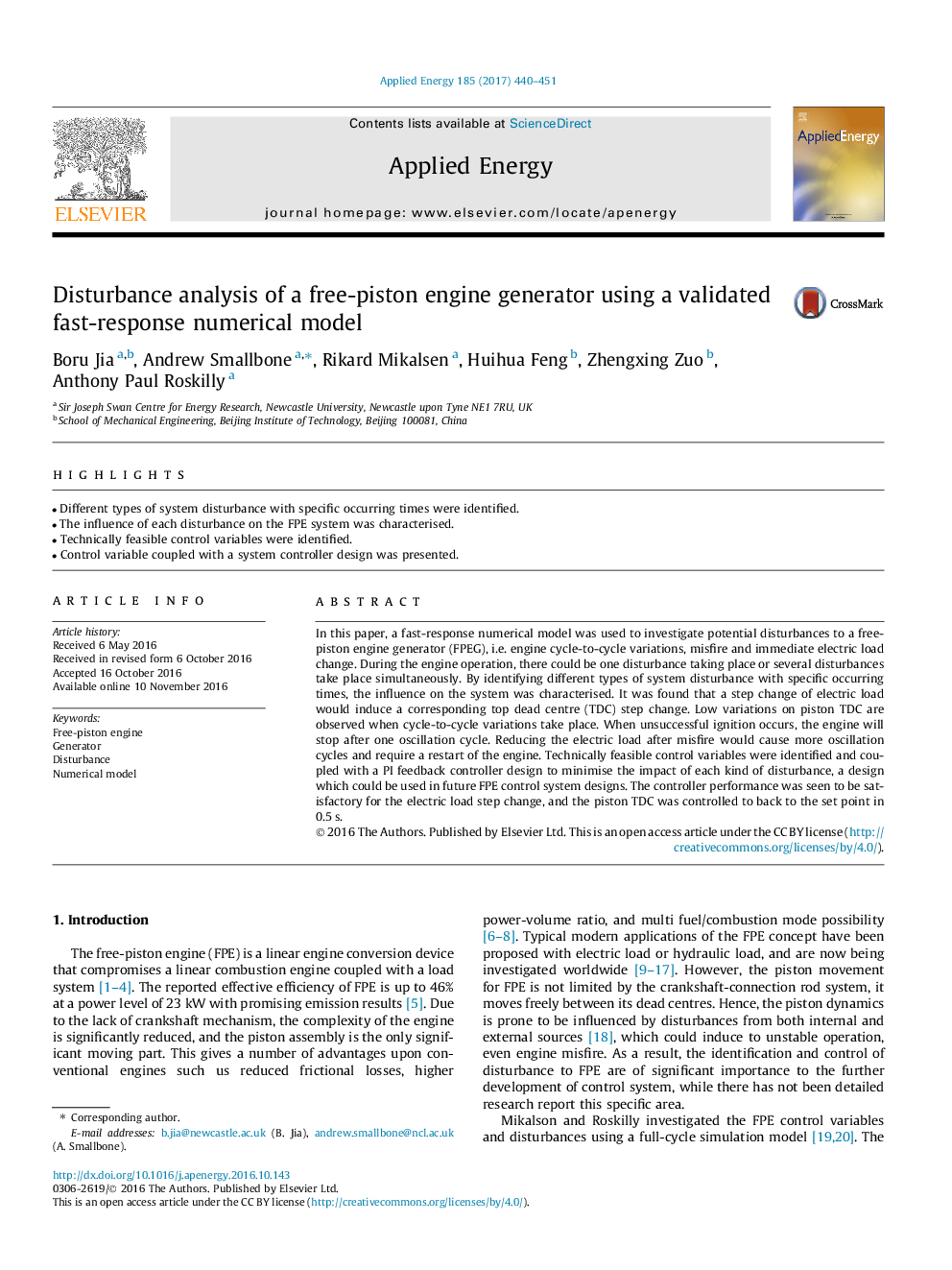| Article ID | Journal | Published Year | Pages | File Type |
|---|---|---|---|---|
| 4916985 | Applied Energy | 2017 | 12 Pages |
â¢Different types of system disturbance with specific occurring times were identified.â¢The influence of each disturbance on the FPE system was characterised.â¢Technically feasible control variables were identified.â¢Control variable coupled with a system controller design was presented.
In this paper, a fast-response numerical model was used to investigate potential disturbances to a free-piston engine generator (FPEG), i.e. engine cycle-to-cycle variations, misfire and immediate electric load change. During the engine operation, there could be one disturbance taking place or several disturbances take place simultaneously. By identifying different types of system disturbance with specific occurring times, the influence on the system was characterised. It was found that a step change of electric load would induce a corresponding top dead centre (TDC) step change. Low variations on piston TDC are observed when cycle-to-cycle variations take place. When unsuccessful ignition occurs, the engine will stop after one oscillation cycle. Reducing the electric load after misfire would cause more oscillation cycles and require a restart of the engine. Technically feasible control variables were identified and coupled with a PI feedback controller design to minimise the impact of each kind of disturbance, a design which could be used in future FPE control system designs. The controller performance was seen to be satisfactory for the electric load step change, and the piston TDC was controlled to back to the set point in 0.5Â s.
